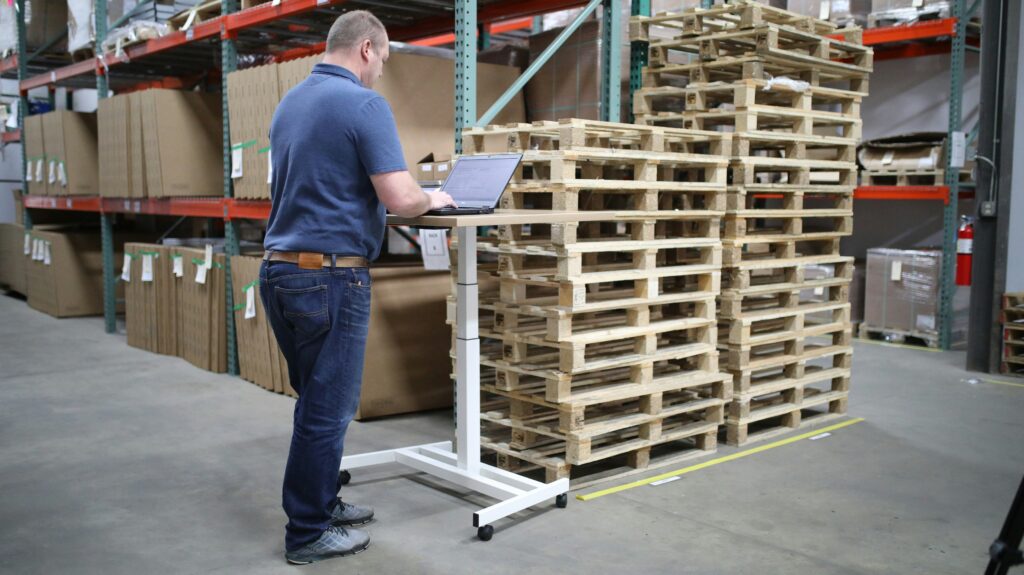Top Benefits of Hyperautomation for Business Efficiency
Table of Content
In the rapidly shifting digital landscape, hyperautomation has emerged as a game changer for companies seeking to improve productivity. Organizations can improve productivity, eliminate errors, and streamline operations by combining business process automation with modern technologies.
At the heart of hyperautomation is a remarkable synergy between automation technologies and AI. This combination automates repetitive operations while also optimizing decision-making processes. As a result, companies can respond more quickly to market developments and client needs.
In this blog, we will look at hyperautomation, its main components, and how it works. We’ll discuss the advantages of AI in hyperautomation, highlight key use cases, and answer frequently asked questions.
What is Hyperautomation?
Hyperautomation is an advanced approach that integrates business process automation with AI to optimize workflows comprehensively. It goes beyond traditional automation by leveraging AI technologies such as machine learning and natural language processing to automate complex, interconnected processes across an organization.
Hyperautomation aims to enhance operational efficiency by reducing manual efforts, minimizing errors, and accelerating decision-making through data-driven insights. This holistic automation strategy enables businesses to achieve higher productivity and agility in today’s competitive landscape.
Components of Hyperautomation
1. Business Process Automation (BPA)
Business Process Automation (BPA) forms the foundational layer of hyperautomation, focusing on automating repetitive and rule-based tasks across organizational functions. By leveraging automation tools, BPA eliminates manual interventions in routine processes such as data entry, invoice processing, and customer support ticketing.
This not only reduces human error but also standardizes workflows, ensuring consistent operational efficiency. Integrated with AI capabilities, BPA extends its functionality to handle more complex decision-making tasks and adapt to dynamic business environments.
2. Artificial Intelligence (AI) Integration

AI integration represents the intelligence layer in hyperautomation, where machine learning algorithms and cognitive automation technologies enhance automation capabilities. AI enables systems to analyze vast amounts of data to uncover patterns, predict outcomes, and derive actionable insights.
Natural Language Processing (NLP) and image recognition technologies enable cognitive automation, allowing systems to understand and process unstructured data like customer queries or document scans. By continuously learning from data inputs, AI in hyperautomation improves accuracy, speeds up decision-making, and supports adaptive workflows that evolve with changing business needs.
3. Robotic Process Automation (RPA)
Robotic Process Automation (RPA) involves deploying software robots or bots to execute repetitive tasks traditionally performed by humans. These bots interact with various digital systems and applications just like humans, accessing data, processing transactions, and triggering responses.
In hyperautomation, RPA works synergistically with AI to handle more complex tasks that require cognitive capabilities, such as analyzing customer sentiments from social media or automating data-driven decision-making processes. RPA not only accelerates task completion but also reduces operational costs by freeing up human resources for more strategic activities.
4. Advanced Analytics and Insights

Advanced analytics and insights are critical components of hyperautomation, providing organizations with real-time visibility into operational performance and actionable intelligence. By harnessing big data analytics, organizations can uncover trends, identify bottlenecks, and optimize processes for efficiency.
Predictive analytics capabilities enable proactive decision-making, anticipating future demands or potential issues before they impact operations. This data-driven approach not only enhances operational agility but also supports strategic initiatives such as personalized customer experiences or predictive maintenance in manufacturing.
5. Orchestration and Integration Platforms
Orchestration and integration platforms play a pivotal role in hyperautomation by managing and coordinating workflows across diverse automation tools and technologies. These platforms ensure seamless communication and data exchange between systems, applications, and devices within an organization’s ecosystem.
By orchestrating workflows and automating dependencies, these platforms enable end-to-end process automation across departments and functions. They also facilitate integration with legacy systems and emerging technologies, empowering organizations to adapt and scale their automation initiatives effectively.
6. Cloud Computing and Infrastructure
Cloud computing and infrastructure provide the scalable and flexible foundation for deploying hyperautomation solutions. The platforms offer on-demand access to computing resources, storage, and networking capabilities, enabling organizations to deploy automation tools rapidly and cost-effectively.
Cloud-based automation solutions support remote access, collaboration, and data sharing across geographically dispersed teams. They also enhance security measures and compliance with data protection regulations, ensuring robust infrastructure for scaling automation initiatives according to business growth and evolving market demands.
How does Hyperautomation work?
1. Integration of Automation Technologies
Hyperautomation integrates various automation technologies such as business process automation (BPA) and robotic process automation (RPA) into a cohesive framework. These technologies automate repetitive and rule-based tasks across different business functions, reducing manual effort and human error.
2. AI and Cognitive Technologies
Central to hyperautomation is the incorporation of AI and cognitive technologies. AI algorithms enable systems to analyze data, recognize patterns, and make decisions autonomously. Natural Language Processing (NLP) allows for understanding and responding to unstructured data, such as customer inquiries or social media interactions.
3. End-to-End Automation
Hyperautomation aims for end-to-end automation of workflows, from initial data capture to final decision-making. It orchestrates processes across systems, applications, and departments, ensuring seamless flow and integration of tasks.
4. Compliance and Security

Hyperautomation platforms incorporate robust security measures and compliance standards. They ensure data privacy, regulatory adherence, and protection against cyber threats, maintaining trust and integrity in automated processes.
5. Adaptive and Learning Capabilities
AI in hyperautomation enables systems to learn from data inputs and adapt to changing conditions. This adaptive capability allows processes to evolve dynamically, optimizing performance and responsiveness.
6. Workflow Orchestration
Hyperautomation platforms include workflow orchestration capabilities that coordinate tasks and dependencies across different automation tools and systems. This ensures smooth execution of complex workflows and enhances operational efficiency.
7. Data-Driven Decision Making
By leveraging AI and analytics, hyperautomation facilitates data-driven decision-making. Insights derived from data analysis guide process improvements, resource allocation, and strategic planning.
8. Continuous Improvement
Hyperautomation supports continuous improvement initiatives by providing real-time analytics and feedback loops. This iterative approach helps organizations refine automation processes and achieve higher levels of efficiency over time.
9. Scalability and Flexibility
Cloud-based infrastructure supports the scalability and flexibility of hyperautomation solutions. It allows organizations to expand automation capabilities as needed, adapting to business growth and evolving technological landscapes.
Benefits of AI in Hyperautomation
1. Enhanced Efficiency
AI in hyperautomation enhances efficiency by automating complex and repetitive tasks that would traditionally require significant human effort. By leveraging machine learning and cognitive technologies, AI can process large volumes of data quickly, identify patterns, and optimize workflows within business process automation (BPA) frameworks. This efficiency leads to streamlined operations and reduced operational costs.
2. Improved Decision Making
AI enables hyperautomation to make informed decisions autonomously based on real-time data analysis. Through predictive analytics and algorithms, AI can anticipate trends, detect anomalies, and recommend optimal courses of action. This capability enhances decision-making processes across various business functions, from supply chain management to customer service, ensuring faster response times and strategic alignment.
3. Scalability and Flexibility
AI-powered hyperautomation solutions are inherently scalable and flexible, capable of adapting to changing business needs and operational demands. As organizations grow and evolve, AI algorithms can scale to handle increased data volumes, additional processes, and diverse integration requirements seamlessly. This scalability ensures that automation initiatives remain effective and sustainable over time.
4. Enhanced Customer Experience

AI-driven hyperautomation enhances business process automation by personalizing customer interactions and improving service delivery. AI algorithms analyze customer data to tailor responses, predict preferences, and offer proactive support. This personalized approach not only increases customer satisfaction but also fosters loyalty and advocacy, driving business growth and competitive advantage.
5. Continuous Improvement
AI in hyperautomation facilitates continuous improvement by learning from past interactions and operational data. Through machine learning models and iterative feedback loops, AI identifies opportunities for process optimization, efficiency gains, and performance enhancements. This continuous improvement cycle ensures that hyperautomation initiatives deliver ongoing value, refining operations and maintaining competitiveness in dynamic markets.
Top 5 Hyperautomation Use Cases
1. Finance and Accounting Automation
Hyperautomation revolutionizes finance and accounting by integrating business process automation (BPA) and AI capabilities. It automates tasks such as invoice processing, expense management, and financial reporting, reducing manual errors and accelerating transaction times. AI algorithms analyze financial data for fraud detection, compliance monitoring, and predictive analytics, ensuring accuracy and regulatory adherence.
2. Customer Service and Support
In customer service, hyperautomation enhances business process automation by automating routine inquiries, ticket handling, and complaint resolutions. AI-driven chatbots provide instant responses to customer queries, improving response times and service availability. Natural Language Processing (NLP) enables bots to understand and respond to complex customer interactions, enhancing overall customer satisfaction and loyalty.
3. Supply Chain Management

Hyperautomation optimizes supply chain management by automating inventory management, procurement processes, and logistics operations. AI algorithms predict demand fluctuations, optimize inventory levels, and identify cost-saving opportunities. Robotic Process Automation (RPA) streamlines order processing and shipment tracking, ensuring efficient supply chain operations from sourcing to delivery.
4. Human Resources and Employee Onboarding
HR departments benefit from hyperautomation through streamlined business process automation of recruitment, onboarding, and payroll processes. AI-powered tools screen resumes, schedule interviews, and analyze candidate suitability, enhancing recruitment efficiency. Automated onboarding processes ensure compliance with HR policies and seamless integration of new employees into the organization, improving employee satisfaction and retention.
5. IT Operations and Infrastructure Management
Hyperautomation transforms IT operations by automating business process automation tasks such as network monitoring, system updates, and cybersecurity measures. AI algorithms detect anomalies, predict system failures, and automate incident resolution, minimizing downtime and enhancing system reliability. Cloud-based infrastructure supports scalable automation solutions, facilitating agile IT management and adaptation to technological advancements.
Robylon AI enhances operational workflows by customizing processes, optimizing efficiency, and seamlessly integrating across diverse tools and platforms, leveraging the capabilities of hyperautomation.
Want to know more? Schedule a demo with us.
FAQs
1. How does hyperautomation differ from traditional automation?
Traditional automation focuses on automating individual tasks or processes, while hyperautomation combines multiple automation technologies to handle end-to-end processes, including decision-making and adaptive learning.
2. What are the key components of hyperautomation?
Hyperautomation includes components such as business process automation (BPA), AI integration, robotic process automation (RPA), advanced analytics, orchestration platforms, and cloud infrastructure.
3. What industries can benefit from hyperautomation?
Industries such as finance, healthcare, retail, manufacturing, and telecommunications can benefit from hyperautomation by optimizing processes like customer service, supply chain management, financial operations, and more.
4. How does AI contribute to hyperautomation?
AI enhances hyperautomation by enabling cognitive automation, predictive analytics, and natural language processing. AI algorithms automate complex tasks, analyze data for insights, and improve process efficiency over time.
5. What challenges are associated with implementing hyperautomation?
Challenges may include integration complexities with existing IT systems, cultural resistance to automation among employees, ensuring data security and compliance, and the need for skilled resources to manage and optimize automation tools.







